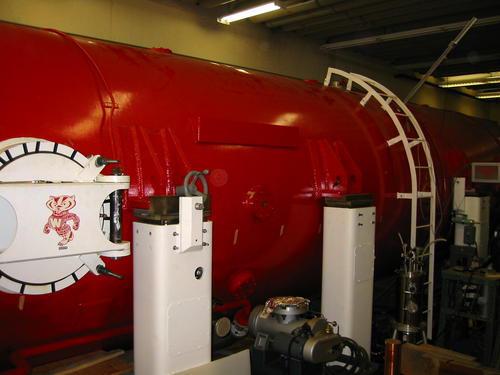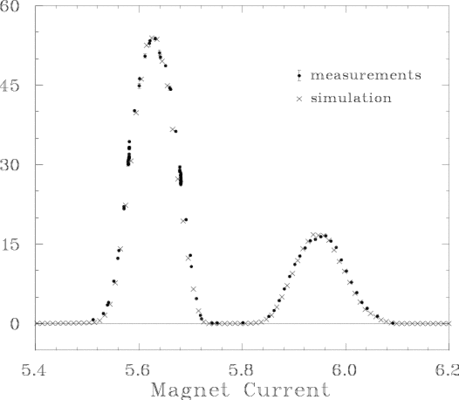

Our group is working on experiments to measure the shape of
the beta
spectrum in the decays of oxygen-14, boron-8 and possible
carbon-14. The mass 14 experiments are tests of the CVC theorem,
which is a component of the standard model of the weak and
electromagnetic interactions. Boron-8 plays an important role in
solar neutrino measurements. The neutrinos from the decay of this
isotope are moderately abundant and are of relatively high energies,
and as a result, some solar neutrino detectors see primarily boron-8
neutrinos. The goal of our experiment is to provide information
that is relevant for determining the neutrino spectrum.
The experiments are carried out at the University of
Wisconsin
Nuclear Physics Laboratory. The short-lived radioactive nuclei
are produced with beams from the Wisconsin EN tandem accelerator and
transported to a beta spectrometer for analysis. The spectrometer
is iron-free, with fields provided by a set of superconducting
coils (shown below). Electrons and positrons from beta decay are
focussed through a set of copper slits and then onto a Si(Li)
detector. The momentum resolution of the device is about 2%, and
the acceptance solid angle is 0.8 sr.
 |
 |
| Superconducting
Magnet Assembly |
Wisconsin
EN Tandem Accelerator |
 |
The
graph at the left shows
some of the results from a spectrometer calibration run obtained with a
bismuth-207 source. The measurements show the count rate as a
function of magnet current. The peaks are from internal
conversion of the 1064 keV transition, with the K line at 5.6 A and the
unresolved L, M, and N transitions at 5.96 A. The crosses are
from a Monte-Carlo simulation using known energies and conversion
coefficients. |